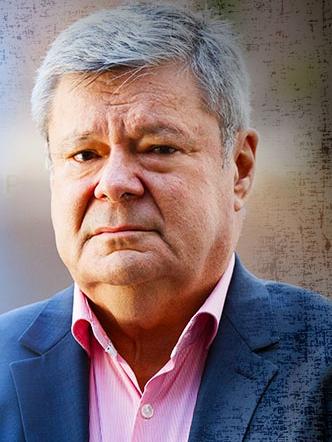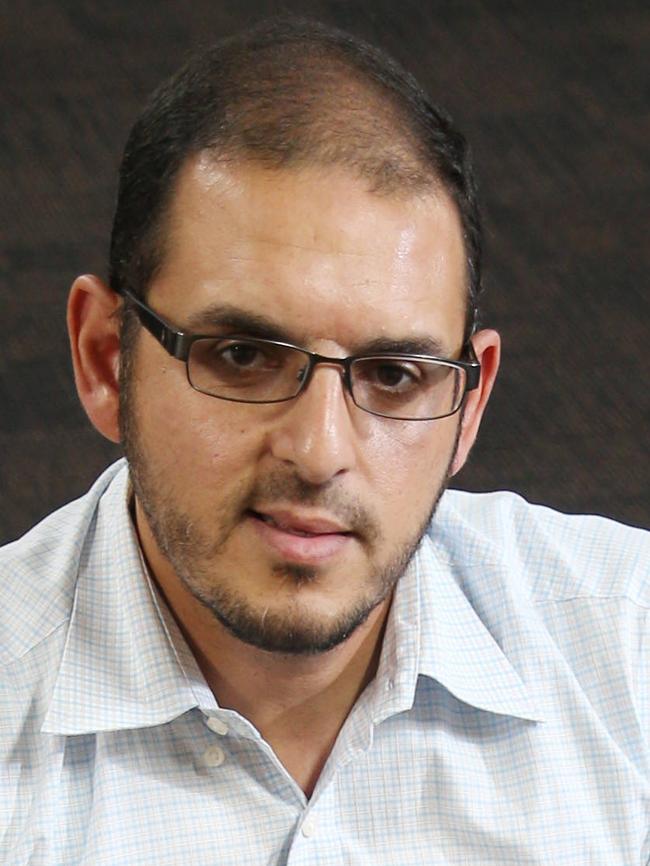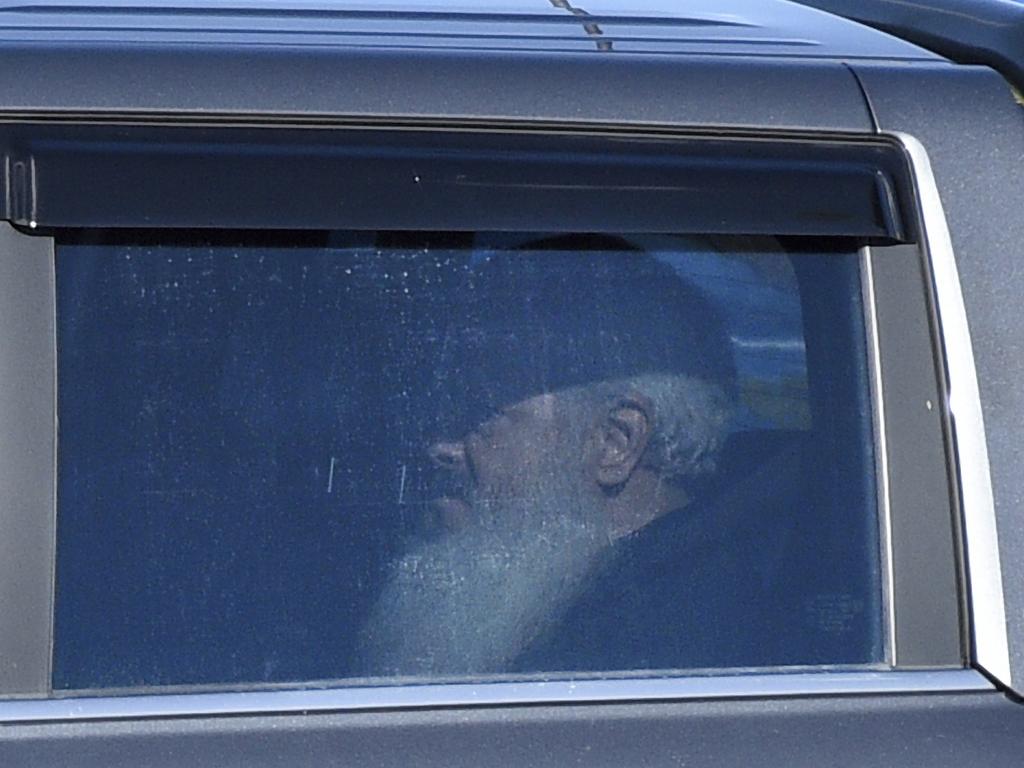Benbrika the terrorist has left prison to face new restrictions
The terrorist Abdul Nacer Benbrika is home but his future will hinge on his desire to renounce his legacy as one of the nation’s most dangerous men.

When Abdul Nacer Benbrika was driven slowly towards the cream metal gates at the family’s three-bedroom house in northern Melbourne, the terrorist was trading a maximum-security prison for a red-brick suburban jail of sorts, where every movement, meeting and word will be noted.
His family called for peace, but everywhere Benbrika goes there is turbulence. All week people have been welcoming the 63-year-old back to the suburb of Dallas, in the heartland of the Muslim diaspora in Melbourne.
Relatives have shuffled cars between the street and the driveway to allow women in burqas to be driven to a gate and then chaperoned from the passenger seats of their cars to avoid cameras.

Benbrika, a trained aviation engineer who speaks English, French and Arabic, is a father of seven children aged 29 to 17 and was born in Algeria into a family of 12. In 1992 he married Rakia Aballah, then a mechanical engineering student at Melbourne’s Swinburne University, three years after migrating to Australia to escape war.
Strict adherence to Islam runs deep in the family, according to court evidence, but there is also at times only a thin veneer of civility in a suburb where 55 per cent of people are Islamic, compared with the national average of 3.2.
At one point this week a man who identified himself as one of Benbrika’s sons threatened “to get physical” with members of the media if they photographed any children leaving the property. He had been working on a Ford ute in the driveway.

At the same time, Benbrika – who was incarcerated for 18 years for plotting terrorism acts – was at the centre of a national debate over whether the federal government had done enough to keep him inside.
In the lead-up to his release, Benbrika’s lawyer, Isabelle Skaburskis, said: “All this man wants is to get out of solitary confinement and go home to his family.”
The question is whether or not Benbrika has rehabilitated himself. Criminal psychologist Tim Watson-Munro, who has treated high-level terrorists but not Benbrika, said the core thinking of radicalised individuals was challenging but could be confronted.Success hinged on the willingness of the person to change and the right support mechanisms in the community, including deradicalisation programs.

“I think they can be,” he said when asked whether people like Benbrika can be rehabilitated.
“There are deradicalisation programs, but it’s a big ask. They need to be well supported in the community.’’
On detention orders, he added: “He’s bound up pretty tightly at the moment.’’
For two decades there has been conjecture about what targets Benbrika and the terror cells he was linked to – one in Melbourne and the other in Sydney – were considering.
He wasn’t sentenced for trying to attack the MCG, but the MCC and nearby Crown casino moved quickly this week to ban Benbrika from entering either venue for life, a response to community concern about what the old man in the long grey beard might get up to.
In 2008, Benbrika was found guilty of being a member of a terrorist organisation, of directing the activities of a terrorist organisation and being connected to the preparation for terrorist activity.
A self-styled cleric, Benbrika was backed by six followers, some already young criminals, who were all found guilty of planning a terror attack on Australian soil.
Five men in Sydney were later found guilty of planning the same attack. The Sydney cell was considered more advanced and dangerous than the Melbourne group, with Benbrika deemed to be dangerous but clumsy.
Deakin University’s Greg Barton, a global expert in extremism, described Benbrika as neither charismatic nor smart, adding that warding off terrorism was complex because of the difficulties of knowing exactly what people were thinking.
His take on Benbrika nearly 20 years ago was that he was not inspiring or charismatic, although he had attracted some followers.
“But he’s not somebody who has magnetic appeal,’’ he said.
On the broader terror issue, Professor Barton said the conflict in Gaza had raised questions of what effect it could have on radicalising some people.
It could be seen as a gift to some would-be terror recruiters.
“It is such an iconic issue, the Palestinian cause,’’ he said.


Islamic Council of Victoria president Adel Salman said this week that Benbrika’s terror preaching was widely rejected by the community and that the ICV continued to provide prison support programs. It no longer runs the Community Integration Support Program (CISP), which Benbrika is likely to be part of. It will be key to his integration.
Victoria Police said CISP was an early intervention program that engages and supports those assessed as vulnerable to, or holding, violent extremist beliefs.
CISP connects people with religious and secular mentors, psychological counselling and educational/vocational opportunities, police said.
Benbrika is not a man who smiles much in public. He listened carefully on Tuesday when judge Elizabeth Hollingworth ruled that the risk was low enough for Benbrika to be released on a 12-month extended supervision order, which has attached to it 30 conditions under which he can live outside Barwon Prison, including restrictions on movement, who he can contact, whether he can shift money and who he can see.
Justice Hollingworth said that Benbrika had made good progress and that the evidence suggested he was not a risk of becoming a lone-wolf terrorist.
“Rather, the general nature of the risk posed by Mr Benbrika is that he would radicalise others or encourage them to engage in acts of religious-inspired violence,’’ she said.
Prison damages people. It is realistic to think that it could take years for Benbrika to recover; he looked somewhat morose when he was driven home, past the You Yangs mountain range to his home in outer Melbourne.
As he was sitting in the back seat of the four-wheel drive, the federal opposition was caning the government over his release, even though the court was satisfied on the evidence he could be released.
The commonwealth did not argue for Benbrika to continue to be jailed, instead backing a three-year extended supervision order. The court ruled Benbrika would be under such an order for a year.
It is highly likely that police, if they sincerely consider Benbrika to be a threat, will be looking for ways to get the terrorist back inside.
Fresh from the immigration detention debacle, Attorney-General Mark Dreyfus slapped down the opposition, which said the government should have applied for a preventative detention order to keep Benbrika inside Barwon.

“What the opposition has repeatedly suggested is that the government ignore the advice of our police, of our security agencies and experts, and ignore the law. This has to stop,’’ he said on Wednesday.
Acting Opposition Leader Susan Ley asked: “Why is the government not applying, as it should have done, for a preventative detention order that keeps this individual locked up?
“He was in jail. Under this Labor government he has been released.”
But at the same time, there was criticism of the failure of the previous Coalition government to disclose a damaging report during previous proceedings to keep Benbrika locked up. Namely an internal report on terrorism risk assessments known as VERA-2R and RADAR.
The review was damning of the assessment processes.
Thirty-four years after Benbrika found his way to Australia, where he initially worked illegally on a visitor’s visa, the cost to the country has been enormous.
Tens of millions via Operation Pendennis and his 18 years in maximum security.
Now, likely, millions more monitoring the movements of a terrorist staring nervously down the barrel of old age.






